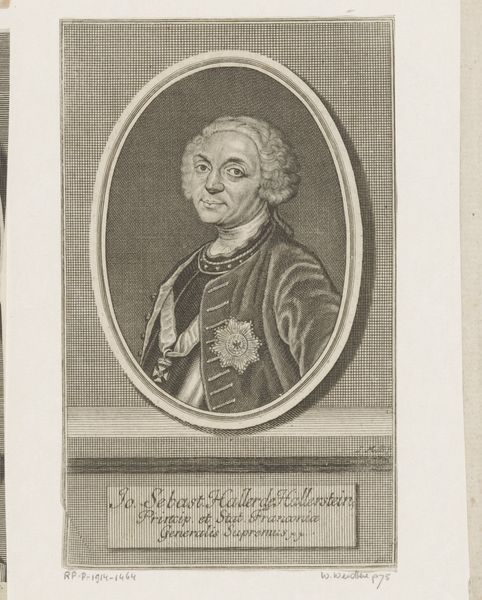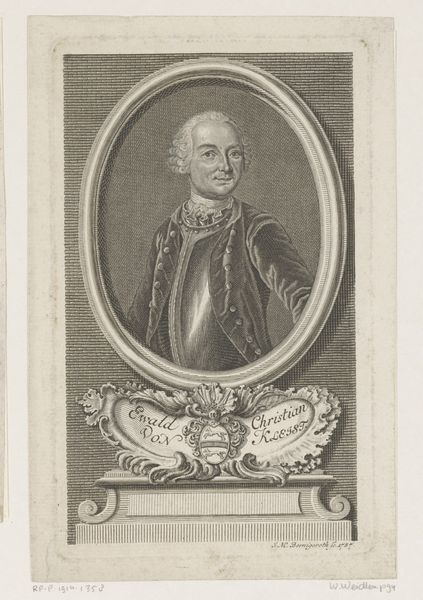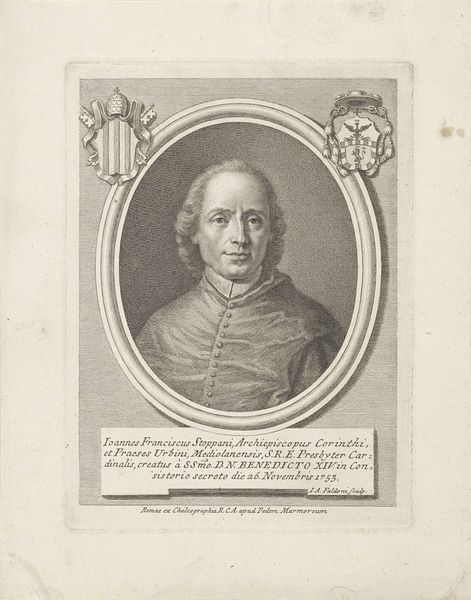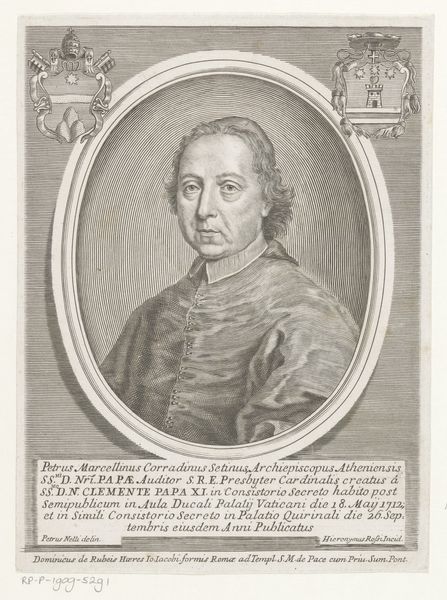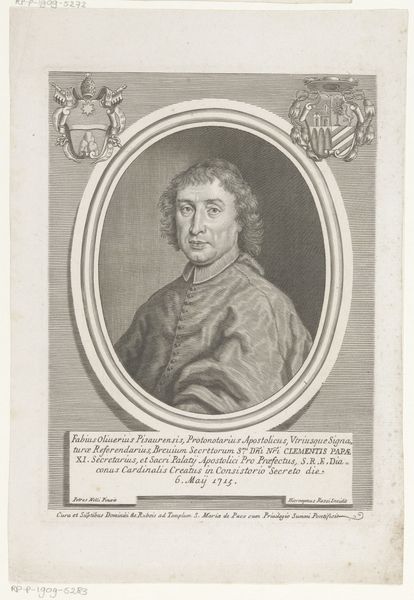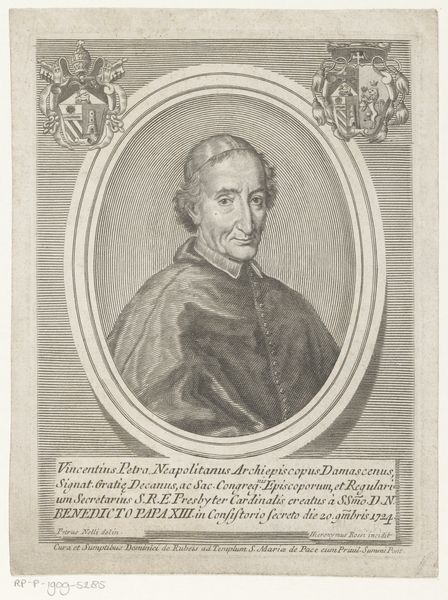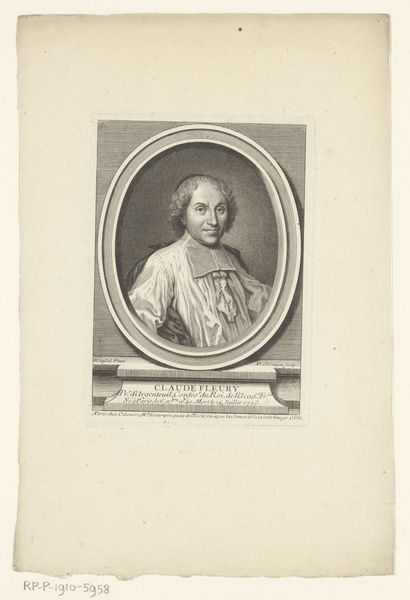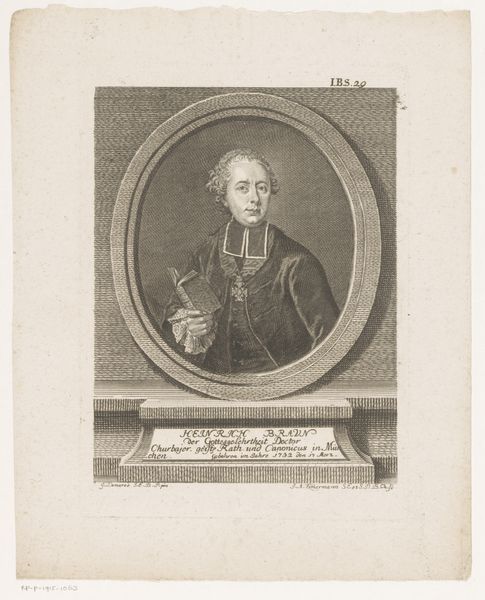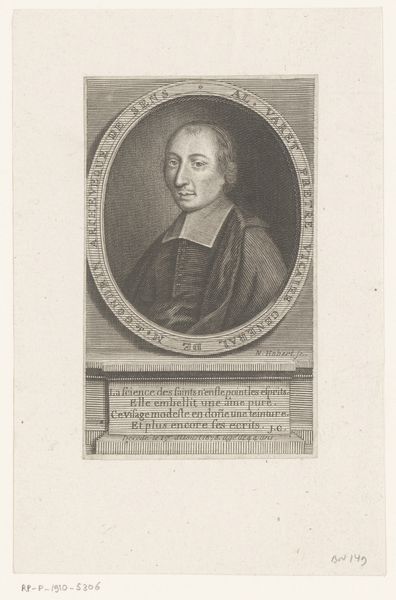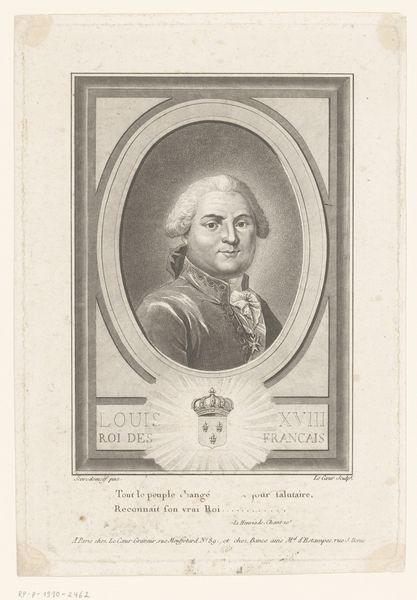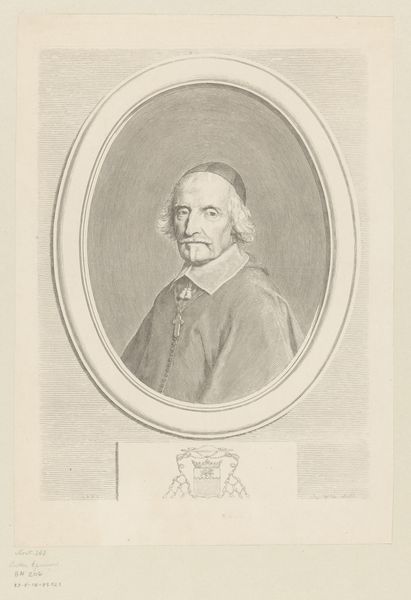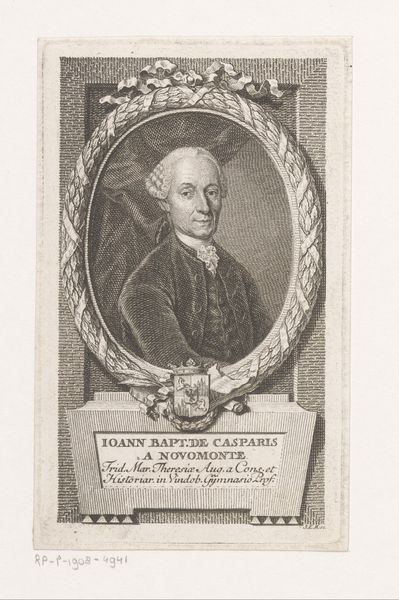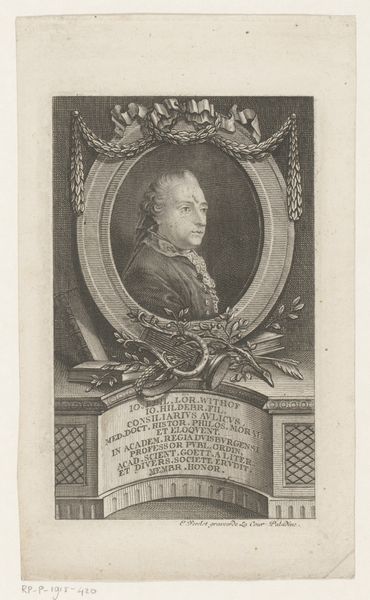
print, engraving
#
portrait
#
baroque
# print
#
history-painting
#
engraving
Dimensions: height 383 mm, width 194 mm
Copyright: Rijks Museum: Open Domain
Editor: So, here we have "Portret van Giovanni Maria Lancisi," an engraving, probably made between 1702 and 1760, by Johann Gottfried Pfautz. It has such a formal, almost austere feel to it. What jumps out at you? Curator: The immediate thing that captures my attention is the printmaking process itself. Engraving in the Baroque period was a highly skilled craft. The labor invested, the careful tooling of the metal plate, the transfer of knowledge from master to apprentice—all of these are crucial for understanding this portrait. We need to think about the role of prints in disseminating images and ideas across Europe at the time. This wasn't just a portrait; it was a form of mass communication for the elite. Editor: Mass communication for the elite, that's interesting. I wouldn't have thought about it that way. How does that relate to the materials used? Curator: Well, the materials dictate the process and reach. Consider the paper: its quality and source would influence the print's durability and perceived value. Who was the intended consumer of this print? Was it destined for a wealthy collector's album, or intended for broader, perhaps even scientific, circulation given Lancisi’s profession? We might investigate the types of inks and paper Pfautz favored to learn more about his intended audience and working methods. The inscription below – have you thought about what it is implying in regard to production value? Editor: I see. So it's not just about what the portrait depicts, but also about how it was made and who it was for, influencing how and where these were consumed. Curator: Exactly! And that consumption reinforces social structures and distributes power in a very tangible way. These were very skilled labourers who were instrumental in building an intellectual elite in society. Editor: That’s fascinating, considering that at first glance, it just looked like a portrait of someone important. Thanks, that perspective really shifts how I see it. Curator: My pleasure. Seeing art in relation to how society is built is a rewarding perspective to maintain.
Comments
No comments
Be the first to comment and join the conversation on the ultimate creative platform.
